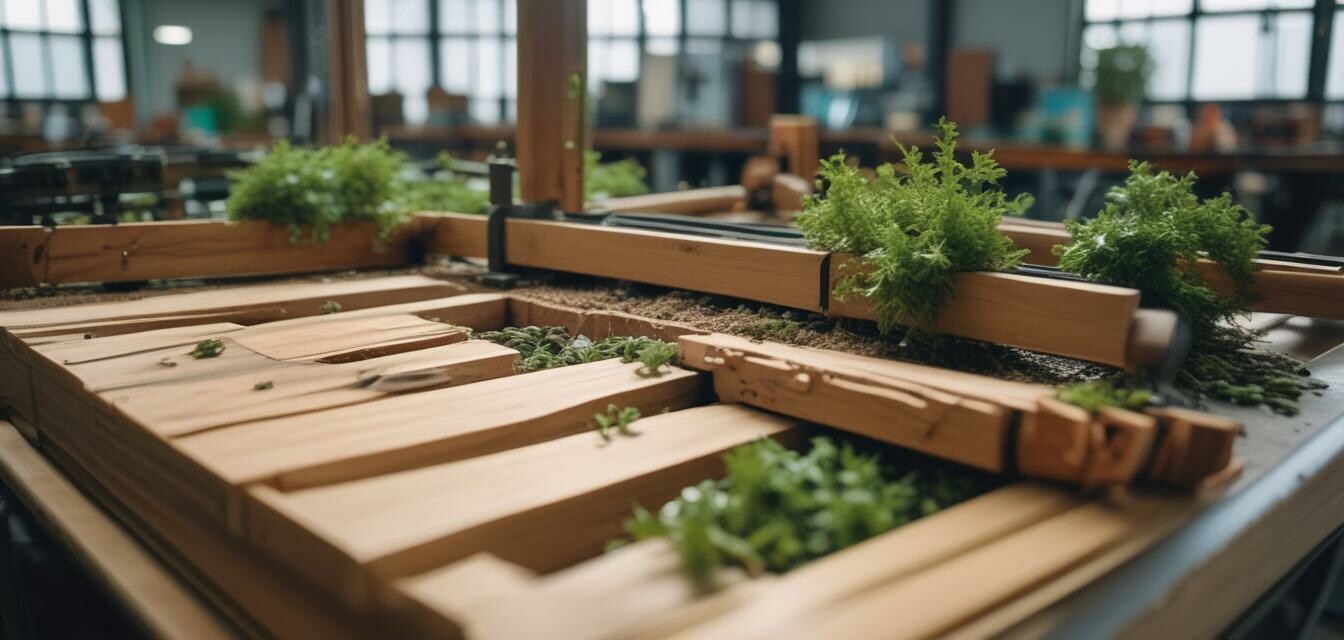
The role of technology in sustainable wood design
Key Takeaways
- Technological advancements are transforming sustainable wood design.
- New methods enhance the efficiency and reduce waste in wood production.
- Computational design plays a vital role in creating innovative wood products.
- Smart tools and processes are promoting better environmental practices.
- Collaboration between craftsmen and technology leads to exceptional results.
As the world seeks to embrace sustainability, the wood product industry is witnessing remarkable transformations driven by technology. These advancements not only enhance production efficiencies but also contribute to the preservation of our forests and ecosystems. In this article, we will explore how technology is shaping sustainable wood design and production techniques in the industry.
How technology is reshaping wood design
Technology plays a critical role in elevating the standards and practices in woodworking. Below are some areas where technology is making significant impacts:
- Computer-Aided Design (CAD): CAD software allows designers to create intricate and detailed designs, helping in visualizing the finished product even before the wood is cut.
- 3D Printing: This innovative technique is enabling the creation of sustainable prototypes and customized designs, minimizing material wastage.
- Sustainable Sourcing Software: Technology assists in tracking the origins of timber, ensuring it is obtained from sustainably managed forests.
- Laser Cutting and Engraving: This precise method reduces waste and allows for intricate designs not feasible through traditional cutting methods.
Benefits of technological innovations
| Benefits | Description |
|---|---|
| Reduced Waste | Efficient cutting techniques minimize leftover material, which can be reused in other projects. |
| Increased Efficiency | Automation speeds up production time, allowing craftsmen to produce more while maintaining quality. |
| Enhanced Customization | Technology enables more tailored designs to meet specific client needs and preferences. |
| Better Quality Control | Advanced monitoring systems ensure that quality standards are consistently met throughout production. |
Innovative techniques in sustainable wood production
The wood industry is continuously evolving, incorporating various innovative techniques to enhance sustainability:
Digital Fabrication
This modern approach combines design with advanced manufacturing technologies, allowing for precise and intricate woodwork that minimizes waste and enhances creativity. The use of CNC machines and routers fabricates wooden designs with remarkable accuracy.
Biodegradable Finishing Products
Recent developments in wood finishing have produced biodegradable finishes that are less harmful to the environment. These products allow wood to age gracefully without compromising sustainability.
Eco-Friendly Adhesives
New adhesive technologies are formulated to reduce harmful emissions and promote recycling, ensuring that wood products remain eco-friendly throughout their life cycle.
Case studies: Successful technology integration in woodworking
Examining successful examples can illustrate how technology and sustainable design practices can work together:
- Company A: Implemented a fully automated production line that reduced wood waste by 30% while increasing output.
- Company B: Utilized 3D printing technology to create custom furniture pieces with unique designs and minimal material waste.
- Company C: Adopted sustainable sourcing software that improved transparency in the supply chain, ensuring all wood was sourced responsibly.
The future of sustainable wood design
With the continuous push towards sustainability, the future of wood design is bright. The incorporation of smart technology, including Internet of Things (IoT) applications, allows for real-time monitoring of wood production, ensuring better adherence to sustainable practices.
Moreover, the rise of augmented reality (AR) in design is enhancing customer engagement, allowing clients to visualize products in their homes before purchase. This technology fosters informed decisions, leading to decreased returns and waste in the production cycle.
Tips for Incorporating Technology in Sustainable Wood Design
- Stay updated with the latest software and technological tools in woodworking.
- Explore training programs to advance skills in CAD and digital fabrication.
- Promote sustainable practices by utilizing advanced sourcing and monitoring technologies.
- Engage in collaborations with tech experts to push the boundaries of design.
Conclusion
Technology is undeniably altering the landscape of sustainable wood design and production, and the impact is incredibly positive. As craftsmen and industry leaders embrace these advancements, the future holds the promise of further innovations. At Natural Wood Products, we are excited to witness and share the journey of wood design as it continues to evolve.
Pros
- Enhanced efficiency and productivity in wood production.
- Boost in customization options for consumers.
- Improved sustainability practices through waste reduction.
- Greater precision in woodworking with the use of technology.
Cons
- Initial investment costs for advanced technology can be high.
- Technology may displace traditional craftsmanship skills.
- Dependence on technology might lead to reduced personal touch in designs.